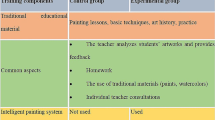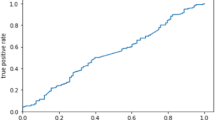Abstract
Technology has influenced education, business, and communication in the last several years, changing many facets of human existence. Many industries have seen radical changes due to the quick development of technology, especially in artificial intelligence, machine learning, data analytics, and the Internet of things (IoT). This research explores vocal music teaching against the backdrop of the twenty-first century educational reforms seeking innovation and pursuing new teaching methodologies. The goal is to develop an autonomous learning framework reinforced by machine learning techniques that use conventional neural networks. The present study aims to implement machine learning algorithms in education, because esthetic education promotes excellence and humanistic attributes in educational environments, and art is essential in social activities. The main goal is to provide a framework that enables music education majors to access a customizable learning environment by integrating a pluralistic network approach and the strength of conventional neural networks. Music education constitutes an integral facet of quality, ideological, and moral education within general colleges and universities. The mission of music education, cultivating competent teachers for various Chinese institutions, necessitates a comprehensive understanding of students’ learning patterns, thinking characteristics, and behavioral phenomena. This study analyzes these facets across diverse levels and perspectives, employing empirical generalization, literature synthesis, logical reasoning, and action research methodologies. The research findings underscore an accuracy rate of 97.4%, emphasizing the augmentation of students' independent learning abilities in vocal music education at higher education institutions. The proposed approach outperforms machine learning techniques such as RNNs, LSTMs, and DNNs. This study highlights the significance and methods for autonomous music education at colleges to improve “music education” students’ learning through “independent learning” theory in higher education music.

















Similar content being viewed by others
Data availability
Contact the corresponding author for access to supporting research data.
References
Ali S, Khan MS, Khan A, Sarwar MA, Syam MS, Aamir M, Ghadi YY, Alkahtani HK, Mostafa SM (2023) Exploring cross-cultural and gender differences in facial expressions: a skin tone analysis using RGB Values. J Cloud Comput 12(1):161
Bagnoli C, Albarelli A, Biazzo S, Biotto G, Marseglia GR, Massaro M, Messina M, Muraro A, Troiano L (2022) Strategic innovation driven by digital transformation. In: Digital Business Models for Industry 4.0: How Innovation and Technology Shape the Future of Companies (pp. 1–48). Springer International Publishing, Cham
Behmanesh M, Adibi P, Ehsani SMS, Chanussot J (2022) Geometric multimodal deep learning with multiscaled graph wavelet convolutional network. IEEE Trans Neural Netw Learn Syst
Carayannis EG, Canestrino R, Magliocca P (2023) From the dark side of industry 4.0 to Society 5.0: looking “beyond the box” to developing human-centric innovation ecosystems. IEEE Trans Eng Manag. https://doi.org/10.1109/TEM.2023.3239552
Cosentino G, Giannakos M (2023) Multisensory interaction and analytics to enhance smart learning environments: a systematic literature review. IEEE Trans Learn Technol. https://doi.org/10.1109/TLT.2023.3243210
Gao X, Gupta C, Li H (2022) Automatic lyrics transcription of polyphonic music with lyrics-chord multi-task learning. IEEE/ACM Trans Audio Speech Lang Process 30:2280–2294
Gupta C, Li H, Goto M (2022) Deep learning approaches in topics of singing information processing. IEEE/ACM Trans Speech Lang Process 30:2422–2451
Hong Yun Z, Alshehri Y, Alnazzawi N, Ullah I, Noor S, Gohar N (2022) A decision-support system for assessing the function of machine learning and artificial intelligence in music education for network games. Soft Comput 26(20):11063–11075
Khan S, Khan M, Iqbal N, Li M, Khan DM (2020) Spark-based parallel deep neural network model for classification of large scale RNAs into piRNAs and non-piRNAs. IEEE Access 8:136978–136991
Li M (2023) Adapting legal education for the changing landscape of regional emerging economies: a dynamic framework for law majors. J Knowl Econ. https://doi.org/10.1007/s13132-023-01507-2
Liu H, Jiang K, Gamboa H, Xue T, Schultz T (2022) Bell shape embodying zhongyong: the pitch histogram of traditional chinese anhemitonic pentatonic folk songs. Appl Sci 12(16):8343
Liu X, Zhou G, Kong M, Yin Z, Li X, Yin L, Zheng W (2023a) Developing multi-labelled corpus of twitter short texts: a semi-automatic method. Systems 11(8):390
Liu Y, Li G, Lin L (2023b) Cross-modal causal relational reasoning for event-level visual question answering. IEEE Trans Pattern Anal Mach Intell. https://doi.org/10.1109/TPAMI.2023.3284038
Liu X, Wang S, Lu S, Yin Z, Li X, Yin L, Tian J, Zheng W (2023c) Adapting feature selection algorithms for the classification of chinese texts. Systems 11(9):483
Liu X, Shi T, Zhou G, Liu M, Yin Z, Yin L, Zheng W (2023d) Emotion classification for short texts: an improved multi-label method. Hum Soc Sci Commun 10(1):1–9
Liu Z, Kong X, Liu S, Yang Z (2023e) Effects of computer-based mind mapping on students’ reflection, cognitive presence, and learning outcomes in an online course. Dist Educ. https://doi.org/10.1080/01587919.2023.2226615
Ma J, Jiang Z (2023) Design of vocal music self-study assistant system based on android technology. In: 2023 IEEE International Conference on Integrated Circuits and Communication Systems (ICICACS) (pp. 1–6). IEEE
Mandanici M, Spagnol S, Ludovico LA, Baratè A, Avanzini F (2023) A taxonomy of digital music learning resources. In: Digital Music Learning Resources: From Research to Educational Practice (pp. 53–66). Springer Nature, Singapore
Nasri NM, Nasri N, Nasri NF, AbdTalib MA (2023) The Impact of integrating an intelligent personal assistant (IPA) on secondary school physics students’ scientific inquiry skills. IEEE Trans Learn Technol 16(2):232–242
Tham JC, Verhulsdonck G (2023) Smart education in smart cities: layered implications for networked and ubiquitous learning. IEEE Trans Technol Soc 4(1):87–95
Wang Y (2023) Report on smart education in China. In: Smart education in China and central and eastern european countries. Springer Nature, Singapore, pp. 11–50
Wei J, Karuppiah M, Prathik A (2022) College music education and teaching based on AI techniques. Comput Electr Eng 100:107851
Wen YW, Ting CK (2022) Recent advances of computational intelligence techniques for composing music. IEEE Trans Emerg Top Comput Intell 7:578–597
Xue E, Li J, Xue E, Li J (2021) Improving the quality of online education in China. In: Creating a high-quality education policy system: insights from China, pp.191–201
Yao W (2023) Assistive technology-based analysis of students’ foreign language anxiety using distributed machine learning and intelligent affective computing. J Aut Dev Dis. https://doi.org/10.1007/s10803-023-06125-0
Zhang F, Chen Y, Qiao H, Liu Z (2022a) SURRL: structural unsupervised representations for robot learning. IEEE Trans Cogn Dev Syst. https://doi.org/10.1109/TCDS.2022.3187186
Zhang Y, Zhang Y, Peng L, Quan L, Zheng S, Lu Z, Chen H (2022b) Base-2 softmax function: suitability for training and efficient hardware implementation. IEEE Trans Circ Syst I Regul Pap 69(9):3605–3618
Zheng W, Deng P, Gui K, Wu X (2023) An abstract syntax tree based static fuzzing mutation for vulnerability evolution analysis. Inf Softw Technol 158:107194
Acknowledgements
No funding was obtained for the study publication.
Funding
No funding was provided for the completion of this study.
Author information
Authors and Affiliations
Corresponding author
Ethics declarations
Conflict of interest
The author declares no conflicting interests that could impact research outcomes.
Additional information
Publisher's Note
Springer Nature remains neutral with regard to jurisdictional claims in published maps and institutional affiliations.
Rights and permissions
Springer Nature or its licensor (e.g. a society or other partner) holds exclusive rights to this article under a publishing agreement with the author(s) or other rightsholder(s); author self-archiving of the accepted manuscript version of this article is solely governed by the terms of such publishing agreement and applicable law.
About this article
Cite this article
Cui, X., Chen, M. A novel learning framework for vocal music education: an exploration of convolutional neural networks and pluralistic learning approaches. Soft Comput 28, 3533–3553 (2024). https://doi.org/10.1007/s00500-023-09618-3
Accepted:
Published:
Issue Date:
DOI: https://doi.org/10.1007/s00500-023-09618-3




